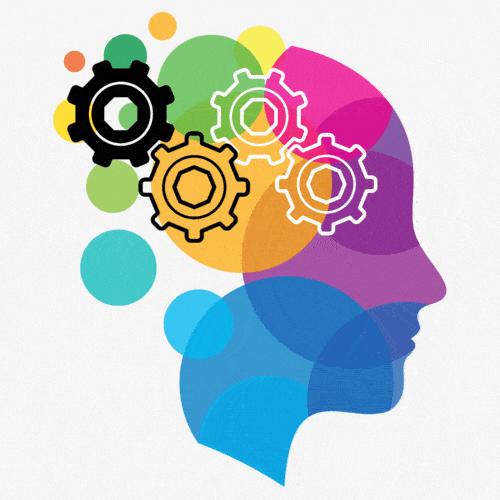In today's fast-paced world, finding moments of mindfulness can be a challenge. Embracing "The Power of Now"...

- Establish a strong, secure relationship with the child.
- Clearly communicate rules and consequences for both positive and negative behaviors
- Praise and reward good behavior
- When disciplining, remain calm and avoid raising your voice
- Use time-outs as a consequence for negative behavior.
- Consistency is key
- Avoid physical punishment
- Work with a therapist
- Progress may be slow, but it's important to remain patient
Disciplining a child with Reactive Attachment Disorder (RAD) can feel like an uphill battle, but it's crucial to remember that you're not alone. With the proper knowledge and approach, you can overcome the challenges and help your RAD child navigate their unique struggles. RAD affects roughly 1% of children. [1] Although it might seem like a small percentage, it translates to many families dealing with this condition.
In this guide, we'll dive into the essential principles and strategies for effective learning how to discipline a child with Reactive Attachment Disorder while avoiding common discipline mistakes that can hinder progress.

Reactive Attachment Disorder is a rare but severe condition impacting a young child's ability to form secure, healthy attachments with primary caregivers, including foster or adoptive parents. It typically develops due to neglect, abuse, or inconsistent care in early childhood. Children with RAD often exhibit a range of emotional and behavioral issues, including trust problems, difficulty regulating emotions, and challenges forming relationships with birth parents or adopted children.
According to a study published in the National Library of Medicine children with RAD are at an increased risk of developing various psychiatric disorders, highlighting the importance of early intervention and appropriate parenting skills and discipline strategies. [2]
Reactive Attachment Disorder (RAD) affects approximately 1.4% of children in the general population. RAD is also more prevalent among children who have experienced early life trauma or neglect, with rates as high as 19% to 40% among children in foster care or institutional settings. [3]


Children with Reactive Attachment Disorder may exhibit a variety of symptoms, including:

Children with RAD often experience significant emotional, social, and cognitive difficulties. They may have trouble regulating emotions, understanding social cues, and adapting to new situations. RAD can also lead to learning difficulties, academic struggles, and behavioral problems in school settings.
Children with RAD are at an increased risk for other mental health disorders, with 58.5% of children with RAD meeting the criteria for at least one other psychiatric disorder [5]. Studies have shown that children with RAD have significantly lower scores in social competence and higher scores in emotional and behavioral problems than their peers [6].
Cognitive deficits have also been reported in children with RAD, with one study finding that children with RAD scored 15 points lower than the comparison group [7].

Early intervention is crucial for children with RAD. Research has demonstrated that children who receive appropriate treatment and support are more likely to develop secure attachments and improve their overall functioning [8]. Involving professionals such as psychologists, therapists, social workers, and pediatricians can provide a comprehensive support system for the child and their family.
One study found that children who received attachment-focused therapy showed significant improvements in attachment security, emotional regulation, and behavioral functioning after 12 months of treatment [9].
Foster parents, adoptive parents, and birth parents must understand the child's behavior and develop strategies for deciding consequences, improving emotional health, and implementing behavior modification techniques. Encouraging physical affection and building trust can also help mitigate negative behaviors in children with RAD.

Discipline for a child with RAD should focus on building trust, promoting attachment, and fostering a sense of safety. Here are some essential principles to keep in mind:
To effectively discipline a child with RAD, consider implementing these strategies:
When disciplining a child with RAD, it is important to avoid these common mistakes:
Children with RAD may face unique challenges in school settings due to their emotional, social, and cognitive difficulties. To support these children, educators and school staff can:
Fostering a sense of safety, trust, and security is essential when disciplining a child with RAD. This can be achieved by:
Attachment-focused therapy is a specialized form of psychotherapy designed to help children with RAD develop secure attachments with their caregivers. This type of therapy may involve individual sessions for the child, family therapy sessions, or a combination of both. Techniques used in attachment-focused therapy may include play therapy, cognitive-behavioral therapy, and trauma-focused interventions. [12]
While there is no specific medication for RAD, some children may benefit from medication to manage co-occurring symptoms or conditions, such as anxiety, depression, or ADHD. A qualified healthcare professional can help determine if the medicine is appropriate for your child and monitor their progress.
Sarah, a mother of two, faced significant challenges when her husband adopted their second child, Matthew, who had been diagnosed with Reactive Attachment Disorder. At first, Sarah felt overwhelmed by Matthew's lack of trust and constant testing of boundaries. Determined to help her son, Sarah committed to providing a consistent and predictable environment.
She established routines for Matthew and ensured that consequences for his behavior were predictable and fair. Over time, Matthew began to trust Sarah, and their bond grew more assertive. Her unwavering commitment to consistency helped lay the foundation for a loving and trusting relationship.
John, a single father, adopted a young girl named Lily, who had Reactive Attachment Disorder. One of the most challenging aspects of raising Lily was dealing with her intense emotional outbursts. John realized that staying calm and composed during these episodes was crucial for helping Lily feel safe and secure.
He practiced deep breathing exercises and reminded himself of the underlying fear and insecurity driving her behavior. By maintaining his patience and responding with empathy, John was able to support Lily through her emotional turmoil and gradually help her develop better-coping mechanisms.
Karen, a mother of three, struggled to balance the needs of her biological children and her adopted son, Ethan, who had Reactive Attachment Disorder. Ethan's challenging behavior often demanded more attention and energy, leaving Karen's other children neglected.
To address this issue, Karen set aside dedicated one-on-one time for her children, ensuring they all felt valued and included. She also encouraged open communication within the family, allowing her children to express their feelings and concerns. Through her efforts, Karen successfully nurtured a supportive and understanding family environment for all her children.
Learning how to discipline a child with Reactive Attachment Disorder demands understanding, patience, and a customized approach that caters to their specific needs. By concentrating on trust, connection, and love, as well as employing effective discipline strategies and sidestepping common errors, parents and caregivers can assist children with RAD in developing healthier emotional, social, and behavioral abilities. Online therapy can also provide valuable support and guidance in this process.
Building a bond with a child who has RAD requires patience, consistency, and understanding. Establishing predictable routines, offering unconditional love and support, communicating clearly and calmly, and providing a safe environment for the child to express their emotions can help foster a stronger connection.
While there is no guarantee that a child with RAD will fully recover, with appropriate intervention and support, many children can develop healthier emotional, social, and behavioral skills. Early intervention, consistent care, and a loving environment are crucial in helping a child with RAD improve their attachment abilities and overall well-being.
Several therapeutic approaches can be helpful for children with RAD, including attachment-focused therapy, family therapy, and individual therapy. These therapies aim to address the child's emotional and behavioral challenges, promote attachment, and improve family dynamics. It is essential to consult with a mental health professional to determine the most appropriate therapy for your child's specific needs.
In today's fast-paced world, finding moments of mindfulness can be a challenge. Embracing "The Power of Now"...
In our fast-paced world, finding moments of tranquility can be a challenge. Meditation apps offer a convenient...
In our fast-paced world, taking time for self-reflection and mindfulness is essential for well-being. Journaling can be...
In today’s fast-paced world, managing stress has become an essential aspect of maintaining overall well-being. Two popular...
Dissociation can be a challenging experience, especially the one that happens at work. Are you experiencing dissociation?...
Bionic reading transforms the reading experience for ADHD individuals by guiding the eyes for focus and understanding. Dive into the world of bionic reading.
Explore the complexities of postpartum depression and genetics in our blog 'Is Postpartum Depression Hereditary?' for insights into maternal mental health.
